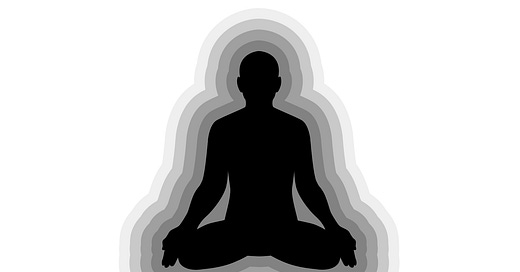Yogic science distills a human being into five layers, or koshas. The Sanskrit word kosha refers to a sheath (as in the sheath of a sword), suggestive of a container that hides something within it. The koshas are viewed from the grossest (physical) to the most subtle (causal).
The five koshas are:
Annamaya Kosha - This is the gross body, or animal body, commonly referred to as the food sheath or prakritik body, as it is the one in which we are most rigidly and noticeably encapsulated. The annamaya kosha is how we come to recognize one another in the world, as in “there is Suzy,” or “there is Johnny.” It consists of bone, skin, muscle, cartilage, blood, fat, hair, all the physical stuff. This kosha requires tremendous amounts of maintenance and subsists on a near constant intake of air, food, water and sleep. Its complexity and geometry is what allows us to sustain life processes at the order of human consciousness. Once the physical geometry of annamaya kosha degrades beyond a certain point, it can no longer support life and we die. When we take asanas and kriyas we are piercing through the density of annamaya kosha to access the more subtle aspects of our being.
Pranamaya Kosha - This is the subtle energy or astral body, its name suggestive of the pranic layer— Prana being the life force energy that pervades all things. While more subtle than annamaya kosha, it still contains physical componentry such as nerve fibers and would also include the electrical impulses that allow for breathing, heartbeat, hunger, digestion, healing, sleep, peristalsis, urination, and other life processes to function properly. But the most significant aspect of this kosha is it is where the physical aspects of our being transition to the non-physical, as the following kosha is of the emotions, which puts us entirely in the non-physical domain. When we practice pranayama we are working to organize and redistribute the subtle energies of this kosha in a way more conducive to life processes.
Manomaya Kosha - The layer of emotions. One could debate what constitutes an emotion and whatever was arrived at would likely be included here. But I often call manomaya kosha the “fear kosha” because fear underlies nearly every aspect of human behavior, even what is commonly thought of as “love”. While love may be a much more preferable emotion to experience, fear is certainly the most prevalent, as it is the strongest motivator of human activity and exists to preserve the previous two koshas in a world that can be uncertain, hostile and potentially violent. While our survival strategies are developed and iterated upon in the following kosha, they have their roots in this manomaya kosha.
Keep reading with a 7-day free trial
Subscribe to Bow to None Bow to All to keep reading this post and get 7 days of free access to the full post archives.




